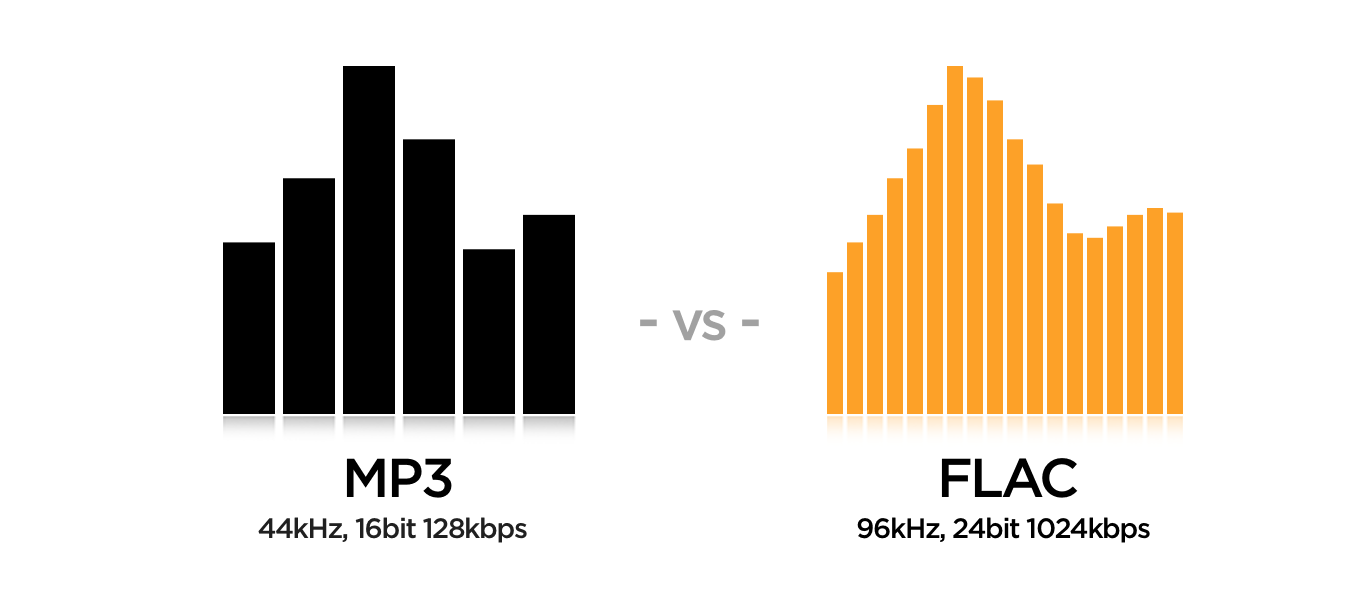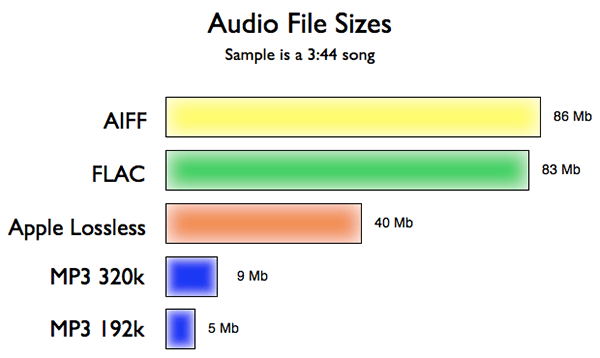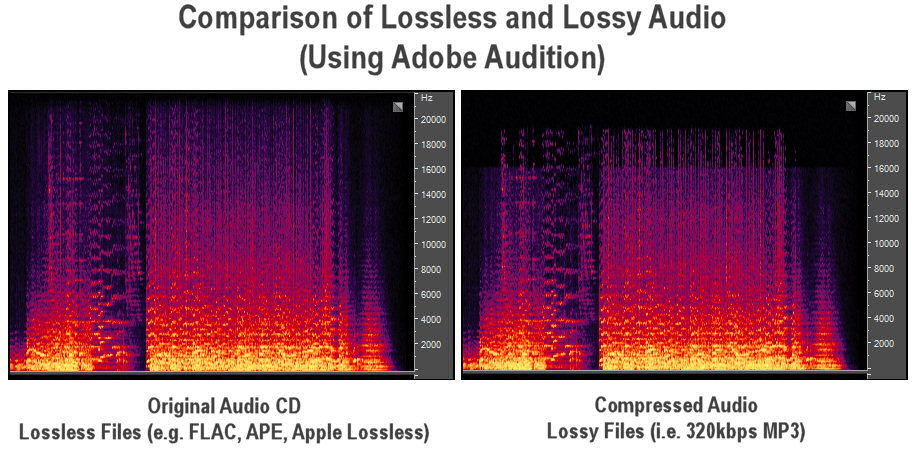
From year to year, the number of audio players and platforms supporting the FLAC format is rapidly increasing. The FLAC format is highly appreciated by most audiophiles and is widely used among professional musicians and DJs. This format retains more of the original sound, sounds better, and compresses audio information less than MP3. So, what is the secret of the FLAC format? What do music lovers dislike about the popular MP3 format? You will find answers to these questions below.
The beginnings of MP3

In the early days of digital audio, the first music format was Wave, which was widely used on CD-Audio discs. At that time, there were no high-capacity hard disks, and an album of 700 MB seemed very large. With the advent of high-performance chips, people invented the MP3 format, which allowed music to take up to 10 times less disk space (~70 MB vs. 700 MB). This made it possible to significantly increase the number of music tracks stored by listeners at home on computers. In such a way, the original format Wave was superseded by MP3 format.
By the way, many people remember the trendy iriver audio players supporting MP3 and OGG, but the time of those audio players passed, and iriver released audio players Astel&Kern with FLAC support in Hi-Res.
Compression of information in MP3 and quality of the sound
Why does MP3 take up less space? This format is based on two technologies, archiving and psychoacoustic compression. Conventional archiving is not very efficient, and it’s only used in Lossless formats like FLAC and APE. MP3 also uses psychoacoustic compression, so such format belongs to the Lossy group (lossy compression).

Psychoacoustic compression deletes data according to a simple principle: everything that is potentially unheard by the listener (e.g., soft sounds on top of loud ones) is ruthlessly deleted. You can draw a lot of parallels with video and photos. For example, in JPG format, pixels with similar colors are grouped in big squares of the same color. When common people form a picture, they don’t notice that different nuances are missing, but this doesn’t impact picture perсeption. Moreover, the different MP3 bitrate has a different quality.

There are a lot of MP3 encoders, and each of them has its level of priority in the special algorithm, what in music is the least important, what to remove first at low compression, and what to remove last at high compression. The higher the compression, the more meaningful information is deleted, and the easier it is to hear music on simple audio equipment.
Unfortunately, the sound quality of MP3 depends not only on the degree of compression, expressed in bitrate but also on what codec it was compressed with and with what settings. It is often compressed at a high bitrate of about 320 kbps but with the least resource-intensive and fastest encoding mode. The file is encoded very fast but sounds worse than a 128kbps encoded file in resource-intensive and long encoding mode. So, what are the main disadvantages of MP3s?
- Lack of or unnatural high frequencies (due to strong thinning of high frequencies, which supposedly most people don’t hear).
- Distortion on vocals, unnatural timbre of instruments.
- Poor positioning of sound sources in space.

The developers of the FLAC format were thinking about how to play high-quality compressed audio on high-end Hi-Fi. And they did it. They created a very quality audio format. Nevertheless, some audio equipment producers still stubbornly ignore the FLAC format and its counterparts. If you want to get a good sound, it is better to choose the format that does not delete “unnecessary” information – FLAC.
The FLAC format uses less space than the WAV format and allows for more precise use of a large number of tags to label files, making it ideal as long-term storage in a digital environment for quality sound. Professional musicians, audiophiles, and DJs like this format because it allows them to keep their recordings in their original form even after multiple tears of digital copying. That’s why music in MP3 format is worse for archiving – it loses a lot of quality.
FLAC files weigh more than MP3 files since no data is lost during conversion. Let’s compare. For example, we have an original WAV format track that weighs 60 MB with a bitrate of 1400 kbps. When converted to MP3, its volume can be reduced by 4, 8, 12, or more times, while in the case of FLAC, it is only 2 times. FLAC format appeared only 6 years after MP3, but during this time, the possibilities of downloading and storing data have improved significantly. There is no problem with it nowadays.
Why do we need a lossy format when we have lossless?

First, some devices do not support FLAC, for example, some TV models. So, you will need to convert FLAC to MP3 to use it on such a TV. By the way, Apple only added support for this format, starting with iOS 11. The same goes for the Chrome and Mozilla browsers.
Secondly, it’s not always possible to store voluminous data. For example, mobile devices have limited disk space, so it is better to use MP3 to save it. Moreover, if you listen through a smartphone speaker, you are unlikely to feel any difference between FLAC and MP3 formats.
Conclusion: what is better – MP3 or FLAC?

The MP3 format was created as a format for transmitting basic sounds while preserving the basic melody and words. The FLAC format was created to preserve all the nuances of audio, including high and low sounds for professional audio equipment.
The above can be summed up by the fact that if you don’t have a sensitive ear for music and high-quality audio equipment, then the MP3 format will be quite enough for you.
But, if you like to enjoy the deep and vivid sound, or are an audiophile, you will like the FLAC format. Stock up on space on your computer or mobile for FLAC audio (as this format is uncompressed and therefore of higher quality – having all the “subtle” sound nuances).
